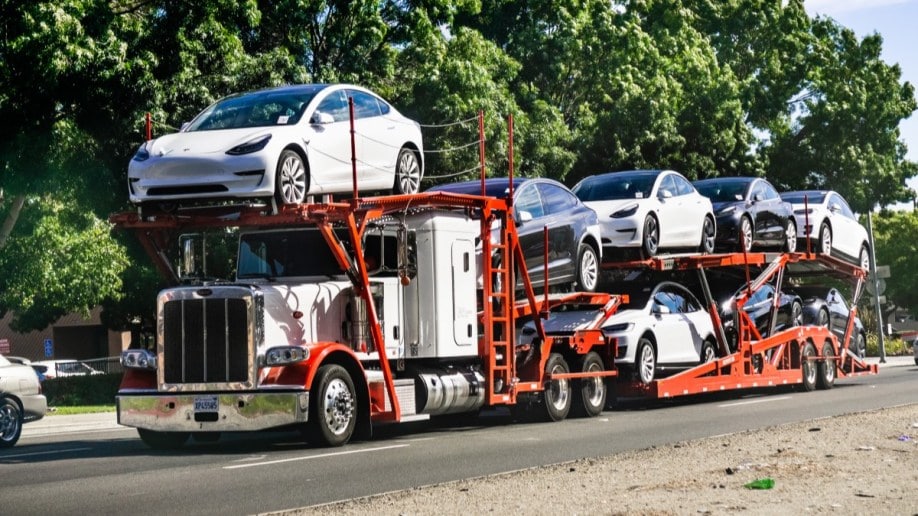
It also angered many existing owners. Some are upset that they could have saved thousands of dollars by waiting to buy. Others are concerned that the company has lowered the resale value of their cars.
The move illustrates the unique relationship Tesla has with its customers and the difficulty that may be ahead as the company navigates a more competitive landscape than it used to.
The Price Cuts
In early January, Tesla launched an unprecedented round of price cuts affecting every vehicle it sells. The smallest of the changes — a $3,000 discount on the base Model 3 sedan — was large by the automotive industry standards. The largest — a $19,000 discount on the high-performance Model X Plaid SUV — was one of the largest discounts on a car in recent memory.
Tesla didn’t explain itself. It’s the only major automaker that doesn’t operate a public relations department, doesn’t answer reporters’ questions, and doesn’t send out press releases explaining major decisions. So the media is left speculating.
The cuts allow most versions of Tesla’s two best-selling vehicles to qualify for a $7,500 federal tax rebate available to EV buyers. Some versions of the Model 3 sedan and Model Y SUV had previously been too expensive to fit under federal price caps.
The cuts may also be designed to boost lagging sales. Bloomberg calls the move “part of a push from Chief Executive Officer Elon Musk to increase sales volume in the face of weakening demand.” The company delivered fewer vehicles than most analysts had expected in the fourth quarter.
The Consequences
Some recent Tesla buyers are going public with anger that the company didn’t give them a chance to benefit from the price cuts.
Bloomberg explains, “This is an age-old problem in the car business: Consumers buy a vehicle only to see a rebate advertised days later that would have saved them a few thousand dollars.” But the radical size of Tesla’s price cuts has amplified the effect.
“I feel like I got duped. I feel like I got taken advantage of as a consumer,” recent buyer Marianne Simmons told Bloomberg. Others took to Twitter to voice their rage.
I think it’s safe to say many of us loyal @Tesla owners were duped and are out $10K+ by the instant price cut will never again buy another. How’d the cost of labor/materials come down like that over night. Just another company taking advantage with the pandemic excuse.@elonmusk
— CoCoNut Tree 🌴 🥥 (@wildaloof12ebel) January 16, 2023
With @Tesla price drops I went 31k into the red on my Oct delivered 2023 #ModelY overnight. @elonmusk you could've at least bought me dinner or offered complimentary #FSD before royally F'ing us buyers that took delivery w/no incentives and helped your Q4 sales numbers. pic.twitter.com/Yj8MNcwZul
— Rev. Gorman (@RevCGorman) January 14, 2023
In China, Reuters reports, “Hundreds of Tesla owners gathered at the automaker’s showrooms and distribution centers” over the weekend, “demanding rebates and credit after sudden price cuts, which they said meant they had overpaid.”
Others are concerned the cuts hurt the resale value of their cars. Forbes notes, “Lower new prices will take a hammer to once-robust resale values, which have already been tumbling for months.” The Tesla Model 3 took our own 5-Year-Cost-to-Own Award in its class last year, partly thanks to its slower-than-average depreciation.
An Unusual Company Faces Unusual Challenges
The story illustrates the unique challenges Tesla faces.
Most car companies have car owners. Tesla has fans. Fans are more passionate than owners.
Tesla had an early lead in the electric car race. Its cars felt high-tech and futuristic and attracted legions of buyers who were as interested in owning the latest piece of technology as they were in buying a car.
But almost every automaker now sells an electric car.
The electric car market is growing. Overall, Americans bought 8% fewer cars in 2022 than in 2021, but they bought 65% more EVs. EVs made up just 5.8% of new cars sold last year, but they made up just 3.2% of car sales in 2021.
EV adoption won’t be linear. It will snowball, with some studies suggesting that once EVs represent 5% of sales, they’ll get to 25% rapidly.
But, as the pie grows, Tesla’s share of it shrinks. The company claimed more than 70% of the EV market at the start of 2022. That figure fell to just over 58% by the end of the year.
Rivals have begun producing dozens of new EVs, competing for buyers’ attention. “As new EVs arrive, loyalty will be tested,” explains a report from S&P Global Mobility.







